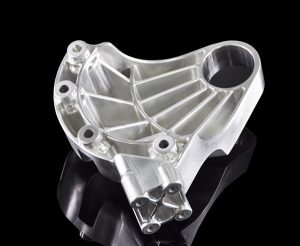CNC machining and vacuum casting belong to rapid prototyping processes. Let’s take a closer look at their distinctions:
Process
In CNC machining, the cutter on the CNC equipment cuts off extra material based on the path set by the program to produce prototypes of the desired shapes and sizes. Vacuum casting is creating simple silicone molds using master patterns and then replicating the parts.
Precision
CNC machining prototypes will have considerably higher precision than vacuum casting prototypes. The precision of CNC machining is typically between 0.02mm and 0.05mm. However, vacuum casting prototypes may be significantly distorted and shrunk because of thermal expansion and contraction; the precision is not as simple to manage, often about 0.2mm.
Materials
CNC prototypes may be made from various materials, including plastic and metal. Examples of plastic CNC prototyping materials are ABS, acrylic, PP, PC, POM, nylon, PEI, PEEK, PBT, PTFE, and other materials. On the other hand, metal CNC prototyping materials include aluminum, stainless steel, copper, steel, iron, and others. The materials utilized for vacuum casting prototypes are limited, mostly rubber, ABS, PC, PA, PP, acrylic, etc.
Production Rate
CNC machining necessitates step-by-step machining, whereas vacuum casting necessitates the creation of a silicone mold and replicating the component. A silicone mold can often replicate 8-15 parts, and its production rate is faster than CNC machining.
Cost
Because CNC machining prototyping must be machined step by step, and adjusting the machine takes time, the cost of the CNC prototype is normally relatively high. However, vacuum casting prototyping may be one-piece forming made using vacuum mold casting. As a result, the cost of vacuum casting will be significantly reduced.
If you have any rapid project, please feel free to contact: joyce@beisi-rapid.com.

